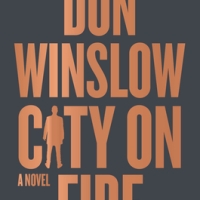Novella Review: Mira’s Last Dance by Lois McMaster Bujold
I received a review copy from the publisher. This does not affect the contents of my review and all opinions are my own.
 Mira’s Last Dance by Lois McMaster Bujold
Mira’s Last Dance by Lois McMaster Bujold
Mogsy’s Rating: 3.5 of 5 stars
Genre: Fantasy
Series: Book 4 of Penric and Desdemona
Publisher: Subterranean Press (June 1, 2018)
Length: 160 pages
Unlike the other novellas in the Penric and Desdemona series which have so far been standalone affairs, Mira’s Last Dance is pretty much a direct sequel to Penric’s Mission. When we last left them, our eponymous hero and the ancient demon riding shotgun in his head were escaping Cedonia, where their clandestine mission of diplomacy went all wrong. Now they are on their way to seek sanctuary in the Duchy of Orbas, and traveling with them are General Arisaydia and his widowed sister Nikys, both exiled from their homeland.
But in the village of Sosie, the group encounters an unexpected hitch, requiring them to seek shelter at a local brothel. Penric is still weak from his injuries sustained in the previous book, but luckily, this is one adventure where Desdemona will be taking over much of the work.
In Lois McMaster Bujold’s World of the Five Gods, demons are actually more like mischievous spirits, and for the most part aren’t considered inherently evil. They possess their human hosts without really taking them over, though they can also be allowed a fair bit of autonomy, as we see in this book. Interestingly, the possession also goes both ways, with the hosts “imprinting” themselves on their demons, giving them some of their knowledge and personalities that they will keep with them forever. Desdemona, being a very old and very powerful demon, has inhabited many bodies, including that of a long dead courtesan known as Mira of Adria. And apparently, Mira was quite skilled in her art.
The story that follows is quite possible the most lighthearted and fun of the Penric and Desdemona novellas that I’ve read up to this point, though this and the fact that Mira’s Last Dance is a follow-up probably makes this one a less “eventful” and consequential book. It also tries to maintain its standalone status, so you don’t get too many details of what happened in Cedonia or why the group is now on the run. As such, even though I’ve read the previous installment, I felt a sense of detachment to the events here and that awkward feeling of sitting down in a theater where the movie playing is already half over.
Still, I enjoyed myself all the same, though admittedly not quite as much as I did with the other books. The characters’ situation and the fact they are feeling from persecution notwithstanding, this installment radiates a sense of merriment and whimsy as Penric gives himself over to Desdemona and lets her handle things her own way. And yes, this involved them channeling the delightful Mira of Adria, which, needless to say, gave way to plenty of humorous scenes to help lighten up the dire circumstances. If nothing else, this book was a nice break and served as a counterbalance to some of the darker, more painful moments from Penric’s Mission.
I also liked that we got to learn more about Desdemona, about what she is and where she might have been before she came to possess Penric. We’ve barely begun to scratch the surface of what we know about her, and this book gave us the chance to dig deeper into this unique relationship between demon and host, as well to explore what this bond means to Penric beyond giving him special sorcerer powers.
Despite the limited scope of the story and the relatively thin plot, Mira’s Last Dance is a novella that’s worth reading, especially if you’re like me and are invested in the Penric and Desdemona series. Even though this one read more like a fun little side trip detouring slightly from the main journey, I’m of the opinion that certain series can benefit greatly from these types of stories because they add a bit of much needed levity. And in this case, I thought Mira’s Last dance filled that role quite nicely.
![]()
![]()
More on The BiblioSanctum:
Review of Penric’s Demon (Book 1)
Review of Penric and the Shaman (Book 2)
Review of Penric’s Mission (Book 3)












I have never read her scifi works, the library has like book 13 or smth in a series
LikeLike
That series is so long! I’ve only read a couple, but stopped. I prefer her fantasy to her sci-fi.
LikeLike
After reading and enjoying the first of these novellas, I have yet to find the time to move forward with the series, but I guess that once I manage to read them back to back it will feel like a whole novel – and I’m certain I will enjoy it very much 🙂
LikeLike
I think once you read the next one, it’ll probably get easier to ride the momentum 🙂
LikeLike
I hear so much good stuff about Bujold but the one book I tried of hers I hated and the SF stuff sounds as appealing as mud to me (in the various synopsese) so I’ve just had to face the fact that she’s one of those authors I won’t enjoy.
Glad this mini-series (and by the by, 160 USED to be a full length novel. I know I’ve banged this drum before but my goodness, it bugs me still) is still working for you. Nothing worse than when something starts to slowly go down hill…
LikeLike
Yeah I think the key there is “used to”. I actually prefer that there’s a distinction now between “novella” and “full length”. I could never see a ~150-page book as a “novel” again, and if a publisher ever tried to pitch me a “novel” that turned out to be that short, I would not be happy; with only a few exceptions, I just don’t think it’s sufficient enough for quality or meaningful story and character development. Or at least, very few authors can manage it – that’s the problem 😛
As for Bujold, I love her fantasy, but I couldn’t get into her sci-fi series. She can be pretty heavy on the romance, which I can only take when I’m in the right mood.
LikeLiked by 1 person
Ha! I love these kind of conversations.
I just wish there was more of a distinction between the various lengths that was generally accepted.
Even if I disagreed with the numbers, it would be nice to have something concrete.
Personally, I go with t1he following:
1-20 pages=short story
21-100 pages=novella
101-500=novel
500+=meganovel
But considering everything, no one is ever going to agree to anything.
People, I hate them.
LikeLiked by 1 person
Haha, it definitely spurred my curiosity, motivating me to do some reading into it. Apparently, the reason why the definition of “novel” is so debatable is because publishers look for different word counts depending on genre. For General Fiction and Romance, editors look for novel submissions 40k words and up. On average, for Fantasy novel submissions, publishers usually ask for 80k and up. I thought it was pretty interestingly, since SFF is also where we typically see what you call mega-novels, and for the fantasy genre I actually think 500 pages is quite average, lol! For me, mega would probably be 700 and up 😀
LikeLiked by 2 people
Very interesting!
I’d also have another category for the 1000+ club, above the meganovel.
I also believe in complete equality among the genres! If it is good enough for general fiction, then it’s good enough for SFF 😀
LikeLiked by 1 person
Yeah, just thought that it was funny not even the industry can agree on novel length, there goes our hopes of anything concrete 😛 I’d be curious to know what you would call the 1000+ club book though. Or just call them Sanderson novels 😉
LikeLiked by 2 people
Ok, that is weird. I was never notified of your response. So, here I am, months and months later.
I think something like “tome” or kilonovel.
LikeLike
I can tell from the cover that this is more of a lighthearted story😁
LikeLike
True! And I love that cover. The Subterranean covers are so much better than the originals 😛
LikeLike
I hadn’t heard of these books by Bujold, but I love this idea of demonic possession and they sound fun. On the list they go, thank you. 🙂
(Also, sorry, I liked your conversation with Bookstooge above … there SHOULD be concrete word/page-counts irrespective of genre. I’m a librarian darn it, I need order!) 😀
LikeLiked by 1 person
Yes, it’s fascinating isn’t it? And it’s funny, because this topic actually bled into another review I was recently working on. I just finished R.L. Stine’s reboot of his Fear Street series, which is about 350 pages, or around double the length the originals used to be in the 80s and 90s. Back then, apparently the expectation is for a YA novel to be about 160 pages, but I guess that number is now higher!
LikeLiked by 1 person
Really? That’s interesting. I guess there must be quite a few factors involved … but it’s nice to think that YA novels are not expected to be longer because our young adults are reading more, thus books are in no way a dying form, AND our future workers are smarter and more empathic. (Way to make a huge leap, bkfrgr!) 😀
LikeLike
‘NOW expected’ … not ‘not expected’ – I read that back too late – sorry!
LikeLike
Huh, I didn’t realize there were novellas set in that world. I just read her World of the Five Gods books recently…I think last year? and really enjoyed them. I’ll have to check these out.
LikeLike
Yeah, these are set in the same world, but they are pretty much separate from those novels and characters. Pity, I would have liked some Chalion stories 🙂
LikeLiked by 1 person
This is one of those authors that I’m so far behind – well, okay, Ive never even started – that it all feels a little bit like a mountain and I can’t get over it. I realise I’m probably missing out but I just can’t get my head round it. Too many books, eugh.
Lynn 😀
LikeLike
Pingback: Mogsy’s Bookshelf Roundup: Stacking the Shelves & Recent Reads | The BiblioSanctum